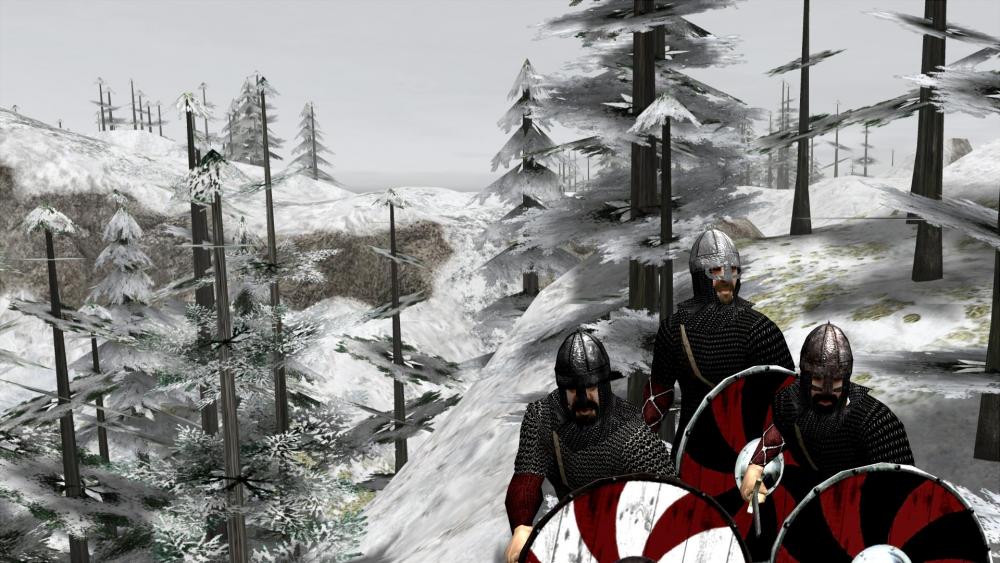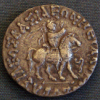Leaderboard
Popular Content
Showing content with the highest reputation on 2018-06-04 in all areas
-
The bug that allows (and proposes you incidentally) to go live should be fixed now, according to the devs. Please let us know if the bug continues to appear after now.4 points
-
A friend recommended 0AD to me three says ago. I've been dipping into it. I'm pretty impressed. I speak as a former senior dev on Battle For Wesnoth, so I have a better idea than most what's required to produce a game like this. Some of you might recognize me for...other things. Well done, everybody. I partiicularly like the attention to historical detail; I can recognize authenticity in the costumes and architecture. This kind of collaboration - attracting more talent than any single proprietary shop can afford to hire - is one of the strengths of open source. I'm expecting great things of the eventual 1.0 version.2 points
-
I build a Formation-Fighting Mod (https://0ad.mod.io/formation-fighting-mod) in which i changed the game play, balancing and fighting quite extensively. The biggest changes is maybe that now formation fighting get a buff and that champs get aura bonuses to have better tactical options in battles. Strategic decisions most be, made for example, with techs, cause they cost more but are also more effective. Also plundering in early stages should be a interesting strategy cause units and buildings give more loot. I'd love to see the mod beeing played in big multiplayer games to see if the balance is still good and how the game play feels. If u have any suggestions, critics or bugs to report please write here in this thread. Itms will be shortly sign that mod,so it will be available directly in game via mod.io. Have fun.2 points
-
Today it was announced Microsoft intends to acquire github.com ($7.5bn). I might move to gitlab.com in the future.2 points
-
2 points
-
2 points
-
1 point
-
1 point
-
1 point
-
I think so. We just need to pull translations (Might need some script updating) Any help is welcome.1 point
-
A23 has SlopeConstraint and HeightConstraint Don't recall if FeXoR other devs commented on it, but my opinion is about minimizing code complexity while maximizing effects and performance. Increased code complexity without adding new features can increase the error-proneness in the entire related code and generally gives more maintenance and consumer more reader time. If alternative data structures can make things faster, it were less maintenance and errorproneness if they would replace existing data structures where possible. (At least that was the aspect I recall when I looked at this the last time.) I don't know if it's true, but code should only be obscured if we don't have an alternative. There are some extremely slow bottlenecks in the code (+1min time), but obscuring the code to improving the map loading time from 14 to 13 seconds seems meh. rmgen doesn't scale well, so if one wants to argue with performance, one could test if proposed alternatives to the current code could allow larger mapsizes than 512*512. (I found it a bit sad to not be able to create a larger map for the jebel barkal scene in the a23 trailer than that giant one.) I'm personally happy to take up new random map code into the map base, as long as we don't have too different ways to create maps. First time readers are mostly familiar with Spahbods mapping style, but FeXoRs maps (Caledonian Meadows, Deep Forest iirc) used entirely different code for mapgen, same as wraitiis maps (Belgian Uplands, Pyrennean Siera, for instance) or _kalis maps (rmgen2/, Ambush, Red Sea). To some degree it has been reinvention of the wheel three times, so I'm just cautious to add more redundancy. Diversity of approach in the random map scripts is good, but in the library only where it is really needed. In Alpha 23 a lot of things were made more conform and the Placer/Painter/Constraint interfaces were used where possible (some of the new Painters and Placers were converted from global heightmap library functions or abstracted from code of individual maps). Since these are interfaces, It allows people to understand what a new prototype does even before they read its contents. What I wanted to say is that we have this ingame mod downloader in alpha 23 and you could spread your maps there too (after one of WFG signed it). Yes, different noise placers should be fine too if they are different enough. Yes, that is the performance we should try to achieve. But ideally it should be achieved by all maps. If a new library can do the same faster, all the maps should switch over too to faster equivalent code where possible. Also code readability improvements (less lines of codes) that make things slower but not measurably slower should be prefered IMO (to improve map author performance). 5 seconds is really promising for a large map, I will have to test (once I am free of bug fixing and maintenance of previous code crimes). I really prefer new maps over deleting old maps and replacing them with ones that have an entirely different character. I would miss the old Alpine Valleys map generation and I don't know if the original author would agree to have his work replaced by something new. All of our maps are favored by players, even the most dumb mainland is played heavily. New maps that provide something unique that no other map provides is something that keeps 0AD interesting to people who played all 65+ random maps already up and down. Also we should have maps that are specific to one scenario, historically and geographically accurate site , rather than remaining generic and featureless (like Continent for instance). That's not a secret that some constraints are very slow. Mostly the avoidClasses and stayClasses ones when passing larger numbers, the area to test increases by the square of the radius. It's one of the reasons why the StaticConstraint cache thing was implemented. There will surely be better ways to refactor that class. Anyway, I didn't say anything actually specific to the code which is likely what you were looking for... I think it should be possible to add new stuff to the library, it should just be like Lego bricks. One should be able to opt-in easily and combine with all the other bricks. So if we need to cache vector slopes or whatever, it could be stored in a new prototype that could be instantiated optionally and passed around to the things that need it. But I will have to take a close look once I can get to it (Stuck with stupid bugs since months). I wish the best luck to the map development until then.1 point
-
1 point
-
Probably not more expensive than MSAA. We're talking 50% more memory and bandwidth to read/store normals vs 300% more for a multisampled texture. The depth/normals test also provides an early exit for FXAA which ought to reduce the memory bandwidth it uses, probably, and definitely reduce compute costs.1 point
-
@aeonios As for anti aliasing, I have a post here, you can refer to it, maybe it can help you, my friend. https://trac.wildfiregames.com/ticket/36401 point
-
No. We're still on feature freeze for bugfixes for issues people are having with a23. Also some people are still experiencing crashes when glsl is enabled, which we can't fix so I need to revert the 'prefer glsl' option before it can be committed. I haven't gotten there yet. Any AA will be a serious pain to implement and MSAA is particularly expensive since it makes every anti-aliased texture 4x as large. I'm considering implementing a variant of FXAA using depth and normals to exclude any non-geometric edges. That will also be a pain to implement since it requires writing normals which the shaders currently don't do and which requires an extra texture target that we don't have set up. Any sort of AA also has to consider water reflections and refractions which use separate textures which makes things an even bigger pain. I'll probably get around to it eventually but I have more important things to do right now that are less difficult to implement.1 point
-
OK, Beautiful job, I think everyone has approved your work. I think we can release this patch. What do you think of it, my friend, @aeonios?1 point
-
1 point
-
1 point
-
This has been a long standing bug with the actor editor. Direct path/file name input is the current workaround, but Stan recently worked on a new actor editor program you might want to try1 point
-
@stanislas69 Lian nu fixed but isn't being used yet. I've made another armature and gave restrictions for easy handle the animations already done one for firing but since this is a repeating crossbow game needs to split attack_ranged from reload animation in both template, dae, and actors: Blend file: chin_liannu.7z In case of need cavalry bow blend file:chin_cavalry_bow.7z Preview of the blend file:1 point
-
1 point
-
Using the version made available here as a starting point: To support the kokiri groves, put this file: core_hyrule.js in gui/reference/common/ (also adds support for the gamestart hero-selection techs). For the factions not loading in the Structure Tree when directly selected from the Game Setup or Civ Info pages, or by clicking the emblem in-session, @SirPope has it correct - you need to use the correct phase tech naming schema. Here's a patch: patch_phasetechs.diff (Also removes the athen-specific phase techs from the gerudo Oasis.) In addition, here's a further patch that corrects the civ-identifiers on various templates: patch_civcodes.diff. The four non-UTF8 characters the game complains about are in data/civs/kokiri.json - in the civ history, and the blurbs of heroes Saria and Mirora. Did someone copy-paste from M$ Word? And finally, if you're going to have *_packed and *_unpacked variants of a siege unit, both inheriting from a *_common template file, then place the default icon for the unit in the *_common file and place the icon you wish to use specifically for the unpacked/packed version in the relevant variant template. (Instead of having the same icon mentioned in both the *_packed and *_unpacked template files.) Edit to add: I might be wrong but the Kokiri civil-centre with the public-hanging and watch-tower upgrades has an incorrect prop added to the prop of the actor (the final result is visually identical to civil-centre with communal-home and watch-tower).1 point
-
No. More accurately, it's the only way script currently have to do things like resources or players bases setting. Maybe you're not aware you're immediately formalizing the problem using geometry as if it was the only solution. But we're not designing a geometry solver but building a convincing illusion of a landscape and using geometry is not mandatory. It's only the most obvious way to go. Maybe you missed the fact my work uses very little geometry if any. It's not coincidence. First of all, rmgen already offers a lot of geometry based features, and it would be stupid to duplicate them. Next, euclidian geometry applies on euclidian spaces not on meshes we're working on. To give an practical example, the YPatchPlacer can compute the border of a region. One can of course discuss the accuracy of the result and try to prove it is wrong using a mathematical method to compute an accurate border. But, rounding the result to fit the map mesh will ruin this accuracy, and I bet the final differences between both methods shall be unnoticeable. BTW, the feature exists not in rmgen and there's no easy way to expand a region as well. Same with slope: mathematically speaking, slope is a vector, not a scalar and is not constant on most tiles because, generally, they're not plane. Rmgen computes a slope factor in a way, I do otherwise, but nobody is right, both are wrong. And last but not least, geometric procedures generate regularity and monotony which can be avoided only adding a lot of noise. That's why I explore other ways to create maps and I hope here to enlarge the tools choice, not replacing anything. If someone is more easy with constraints in rmgen fashion, it's OK to me, of course. But don't tell me those constraints are absolutely necessary features. One more time, the proof is in the result: I don't use constraints, only locks and regions. And as you say: Thanks, you're clearly not ready yet to enter my fan club but time helping, who knows ? But I disagree: there is not a single good direction. There are many each one having it's strong points and drawbacks. I think this at least partly explain why I meet some incomprehension among developers here. They try to make me enter the Procust's bed of their geometric model and can't see why I resist. What do you mean here ? It's not "on paper", this script is working and you will be able to verify it as soon as the A-23 upgrade will be out. Now, don't expect me to reproduce exactly existing maps to create a valid benchmark. I should reproduce even their defects which is ridiculous and impossible: can you really admit at last my placer is not a duplicate of any rmgen placer ? It's like a knife and a corkscrew: both can be put at some limited purposes like opening a bottle but you wouldn't try to peal an apple with a corkscrew. And yes a knife can be used to open bottles, but does this means corkscrews are useless ? Of course not, but your user experience is not very valuable to me because many things are known or even so obvious to you that you imagine not their ignorance can be an obstacle to ordinary users (I have the same problem of course and anyone having some degree of technical expertise, as you say). An example is the "random" label we put on these maps scripts. They are fully deterministic and the only "random" thing in it is you can let the computer choose a map within the large set of maps the script can produce (2^16 I think but maybe it's 2^32 or even 2^64). To you, there is probably no mystery here, but it's against common acceptance of the word "random" and it can puzzle people knowing not how a pseudo RNG works. The challenge here is to learn how end users figure in their mind the process of creating a fully featured map, as a cooking recipe, using their words and not ours. Believe me, this is far less obvious than it looks. Friendly,1 point
-
Farms and dock for a steppe nomad culture are just not historical and that is one of our primary aims on this project. Enjoy the Choice1 point
-
Caesar spent years campaigning all over Gaul (about 8 years, I think), as opposed to spending probably no more than 6 months in Britain (both campaigns combined), barely going inland at all. His descriptions of Britain including the specifics about the war are far less expansive and detailed. If anything, he says that there is little difference between the British Celts on the coast and the Gallic Celts (except for chariots for example). And a logical fallacy. I wasn't arguing that Britains used the bow because Carthaginians, Ptolemies, Seleucids, Mauryans or Romans, used the bow. I was arguing that they used the bow because their immediate predecessors (yes, partly ancestors), used them, as well as their culturally very similar contemporary neighbors, the Gallic Celts. Yes, of course, but expecting tangible evidence in the form of organic remains from more than 2000 years ago, or written records from a pre-literate society is kind of silly, isn't it? Interpretation of circumstantial evidence becomes necessary in this scenario, and I believe that a "lack of archery among British Celts" is the wrong interpretation. Archery being present, but probably not playing a big role in warfare seems like a much more tenable and nuanced position, than a lack of archery altogether.1 point
-
Well that's good to know. I think the only difference is that paint() should take an area as input. It's a pretty simple fix. Creating a new painter isn't really a major overhead, and usually you only create a painter once per major job. Like if you wanted to paint mountains, you'd probably create a painter for that, create all your mountains, and then discard it. You wouldn't create a new painter for each mountain. Of course if you have two different functions creating two different types of mountains, then each would create its own painter, but that's a minor detail. I suspect that the biggest overhead for map generation is actually checking constraints, which may be O(n*m) where n is every tile being written to and m is every point owned by every tileclass that needs to be checked for the constraints. If tileclasses were reduced to a single tilemap with one allowed class per tile, then checking constraints could probably be reduced to near constant time. There are actually two ways that can already be used to achieve that with current rmgen. The first is constraints and the second is to use placement within an area. Both methods can be combined as well. The only thing it doesn't support is using slope or height in constraints, but it would be pretty trivial to extend constraints to support that. I've also extended the library with a function that allows you to get an area from a set of constraints, making it easy to increase the success rate of operations which would otherwise fail heavily due to restrictive constraints. With all of that I'm not really sure if the TOmap is really necessary. Getting stuff included in rmgen isn't really that difficult. The fractal painters could be added immediately with just a little bit of cleanup and updating. The other stuff would probably need to be reformulated, which would be more work but that ultimately depends on how much of it is actually needed.1 point
-
I tried to make siege towers able to capture buildings, but it didn't work for some reason. Maybe it's time to revisit it.1 point
-
I know you all guy have been waiting with holden breaths. I will synthesize some of Darcreavers ideas, along with comments and suggestions from others, and merge them with some concepts from my mod to propose a new gameplay for 0 a.d. I hope you guy like this. I commend you for reading all the way through. General Concept In general, most think there are structural problems with the game's design. I will not comprehensively rehash them here as there are a dozen threads on this topic. I will simply propose the vision and you guys and accept or reject it. So, in keeping with my mod, Delenda Est, I propose a "weak countryside, strong core" concept, but incoporporating some of what has been said over the past couple weeks. What I propose to do is also keep elements of the citizen-soldier concept, while also creating a hard battalions paradigm that also works with single units. The concept also takes into account many of Darc's criticisms and suggestions from others. Map Control Control of the map is crucial because of a few factors. Most important buildings, like houses and barracks, can only be built in the player's territory, so grabbing more land by building new settlements is important to population growth. These buildings are capped per settlement, so building more settlements and grabbing more land is important for building new buildings. Most resources are usually far away from the starting position of the player and are concentrated in impressive, lucrative depots. The countryside contains beneficial items like herd animals, which act like food relics, and mercenary camps, from which you can train 0-pop, fast-training mercenary soldiers. Grabbing territory or controlling the map deprives your enemy of the benefits of these things as well. Countryside Concept: Weak Countryside, Strong Core Players can now build Storehouses and Farmsteads in neutral territory. Most necessary resources are also placed in the neutral "no man's land" between starting territories of players, so now it's crucial to gather resources away from easy defenses. This is the "weak countryside." Territories now represent city-boundaries instead of national borders. Important buildings like barracks and fortresses and houses and markets must be built in the strong defensible core territory, while resourcing operations, like mining and farming, are done out in the dangerous countryside. This represents the reality of ancient times: the concept of national borders was not well-defined and many times nations and empires were separated by wild frontiers rather than by solid lines on a map. Settlement Phases, Territories, and Provinces Each Civic Center building casts a territory (Civic Centers, Wonders, and Fortresses are the only buildings to cast a significant territory range). This is a province, and each subsequently built civic center dynamically creates its own province, whose territory does not merge with an adjacent Civic Center's territory. So, each Civic Center's province is its own territory, size dictated by the Settlement Phase the province has attained, via the number of buildings built within it. Village Phase Small territory. Economic-focused. Hunt, gather berries, scout the map for herdable animals, treasures, mercenary camps, and neutral settlements. Set the foundation for your home settlement's progress. Food is the most important resource, while Wood becomes increasingly important as the player builds more buildings. Player is probably scouting heavily for farmlands, quarries, and mine shafts. Train Citizens from the Civic Center and Slaves from Storehouse and Farmstead. Citizens can upgrade to soldiers for a short time with the Town Bell for defense. More detail below in the 'Units' section. Palisade walls and wooden defense towers are available for defense. Town Phase Requires 10 buildings built within its province Territory grows by 25%. Unlocks barracks, blacksmith, market, shipyard, cult statue. Train your first citizen-soldiers and light warship. Stone and Iron now become a needed resource, for military buildings and blacksmith teching respectively. Player is probably heavily into farming on farmlands now and has captured a number of herdable animals that can be garrisoned in a corral for a free trickle of food. Stone walls become available and wooden defense towers can be upgraded individually to stone. Player may attempt to capture 1 or more neutral settlements on the map to gain a territorial advantage over the enemy. City Phase Requires 25 buildings built within its province Territory grows another 25%. Unlocks Fortress for heroes, champions, and siege weapons. Trade routes should be set up by now. New civic centers unlocked: Found new settlements now instead of only capturing neutral settlements. Mercenaries become part of the mix as mercenary camps are captured and the coin resource is acquired to hire them. Capital Phase Requires 1 Wonder, which costs 1000 wood, 1000 stone, and 1000 glory. Territory grows a final 50%. Unlocks all remaining special techs, uber techs, and siege techs Units train faster, buildings build faster, citizens and slaves gather faster inside the Capital province. Only one province can be in Capital Phase at once. If the Civic Center is destroyed or captured or the Wonder destroyed or captured, another settlement may be upgraded to Capital by building a Wonder in its province. An example of how it would work: Build 10 buildings within a village phase province and the province territory dynamically grows to reflect the new Town phase, complete with a graphic and sound effect to tell the player this has happened. The Civic Center looks bigger and more ornate, owing to the province's new size and importance. Stone walls can be built in the province now, and the wooden defense towers can be upgraded to stone defense towers. A market can be built in the province now, as well as a blacksmith. Since the barracks is now unlocked, you can train your first dedicated soldiers. Build 15 more buildings and BOING, the province grows again to the City Phase and Fortresses can be built in the province as well as special buildings. Finally, build a Wonder and DOOONG that province becomes the Capital phase, the province gains more territory, additional special techs and abilities can be researched, and things just work faster and better. Just an example of how it can work. Point is, not every province upgrades together as one. Each one can have a different phase of development. Resources As Darc suggests, I propose additional resources used for different things. I maintain that it does not matter how many resources the game has, within reason of course, only that the resources are unique, are used for logical purposes, and entities, which are units buildings and techs, only cost 2 different resources besides time and population, which are quasi-resources. Food: Every unit costs food with a few exceptions. Berries. Keep the berry bushes, but make them more visible somehow, I propose with new decals beneath them to make them stand out. Only need a batch of them at the starting points on the map. Yes, when founding a new colony, food comes from anywhere it can. Snowy maps = no berries or maybe 1 or 2 bushes; desert maps = 5 bushes; temperate, tropic, or mediterranean maps = 2 x 5 bushes. Farmlands are introduced and are usually situated just outside the starting territories of the players and then at nice flat or rolling areas of the map with few trees or rocks. Fields and Farmsteads can be built in neutral territory, so build your fields on the farmlands for a farming boost of 50% or more. Farming near Civic Centers and Temples is penalized. Hunting can be achieved with the free Scout Cavalry unit provided at the beginning of the match or by Citizens. Hunting is only a minor source of food. Fishing is the same as currently. There are Herdable Animals that are easily captured, like in Age of Empires, and can be garrisoned inside Corrals to gain a trickle of food (for sheep, cattle, and goats) or to gain a training bonus (camels, horses, elephants, etc.). These are 0 A.D.'s version of the "relics" seen in Age of Empires or Age of Mythology. Wood: Most economic and civic buildings and citizen-soldiers cost some amount of wood. There are straggler trees and then there are groves. Stragglers have a gather limit of 5 gatherers, and will not prevent the construction of buildings. A building can be build over a straggler and the straggler will be removed from the map. Groves represent sections of forest, so are larger and contain more wood resource, representing many multiples of trees. They have a gather limit of 20 and cannot be built upon. Pathfinding obstruction is removed from all trees. Groves, by representing forests, give a combat bonus to "barbarian" civs like the Iberians and Celts, while also giving a movement rate penalty to siege weapons. So, now we can have combat inside forests and maybe give some kind of ambush feature. Off the top of my head, I can see tasking a battalion of Celtic soldiers directly to a grove and then being given some kind of bonus by doing so. Like, ctrl-right-click the Celtic soldiers to the grove and get a custom cursor telling you they're going into guerilla or ambush mode when they get there, kind of like "garrisoning" the battalion into the grove. A lot easier to do something like that with a large grove object than with a bunch of individual trees. Stone: All military and defensive buildings cost stone. Slingers cost a small amount of stone. Stone is acquired from stone Outcrops and stone Quarries. Outcrops are the stone mines already in the game. 1 or 2 of them can be found near the starting base of each player. But aside hills or in the sides of mountains or cliffs are Quarries. These are large objects that look like open pit granite or marble mines. They have a "slot" on which a Storehouse can be built. Building a Storehouse on the slot claims the Quarry for the player. Gatherers can now gather from it and they don't have to shuttle back and forth to the slotted Storehouse. Iron: Mined from Mine Shafts and used to train sword units and research technologies, especially at the Blacksmith. Like a Quarry, a Mine Shaft has a "slot" on which to build a Storehouse and claim the Mine Shaft for the player. Gatherers can then be garrisoned into the mine entrance to gather the Iron. They will shuttle iron resource into and out of the mine entrance to and from the Storehouse. If the player's Storehouse is destroyed by the enemy, the gatherers inside the mine die. Coin: Call this silver, call this gold, call this coin, call this Precious Metal, I don't care. I'll call it Coin for this presentation. This is primarily gained from Trade, either with yourself or with your allies, and sometimes can be had via Treasure or Loot. Used to train Champions and Heroes and recruit Mercenaries. Coin is also the basis for the Barter system at the Market. By capping the bartering system to a Con-based system, you must now choose to use the Coin to barter or to buy things like Heroes, Champions, special techs, etc. A Coin-based barter system helps prevent resource floating because you can't now use a plentiful resource like Wood to flood the market and get easy iron or easy stone. Glory: Directly from Delenda Est, this is attained by building Cult Statues and by killing enemy units and buildings. Cult Statues are praised by units to gain the Glory resource that is used to train heroes, research special technologies and battalion upgrades, and Wonders. Glory is the only resource Soldiers and Heroes can help you gather, by killing enemy units. Individual hero units can also gather Glory by praising Cult Statues alongside gatherers. Buildings Buildings are largely the same as they are now, with some major and minor changes. The Civic Center, Mercenary Camp, Outpost, Wonder, and Dock are the only capturable buildings. Econ, Defensive, and Military buildings must be destroyed. Not all buildings are listed here, just some of them with some notes. Civic Center Used to train Citizens and create provinces. Besides Wonders and Fortresses, Civic Centers are the only buildings that cast a significant territory. Provincial territories created by Civic Centers do not merge or overlap, but may border one another. Phase techs removed as researchable techs with costs. Instead, they exist in the Civic Center UI to tell the player the prerequisite for phasing up. The tech itself is auto-researched once the required number of buildings is built. Settlement phases can vary per Civic Center/Province. This dictates what the player can build in each province and how large each province's territory is. Capturing a Civic Center immediately transfers control of that's province's ungarrisoned houses, temples, and markets to the capturing player. Dock and Shipyard Civs with more than 1 warship class receive a warship-centered Shipyard, which is separate from the economic-focused Dock. Docks are capturable, Shipyards destroyable. Corral Sheep/Goat training either removed or revamped. Primary purpose is to house Herdable Animals, which act like "relics" from Age of Empires and Age of Mythology. Techs revamped to this new focus. Houses In Village and Town phase houses can be built. City phase unlocks the tenement building or city block building, which is a large "house" structure that gives 2.5x the pop cap bonus as a standard house. Market Can configure to gain a "tax" trickle of coin, and perhaps all other resources besides glory. Set up trade routes between markets or market and civic center, haven't decided, to gain the coin resource. Trade with allies is more lucrative, but trade with other provinces of your empire is possible. Max 5 traders per market, 1 market per province. Bartering is a coin-based system. Sell food, wood, stone, and iron for coin, or buy those resources with coin. Cult Statue Each Cult Statue is more expensive than the last. Building these gives you the Glory resource. Each one gives a slow trickle. Task citizens or slaves or other individual units to the cult statue to praise it and get more Glory. Fighting and killing enemy units and buildings gains the player more Glory. Mercenary Camps Between 1 and 2 of these per player on every map. Hire mercenary battalions, who train fast and cost 0 pop, but are limited to 3 battalions for the first merc camp, and +1 for each new one captured. They're also rather expansive, costing coin and some other resource. Capturing Buildings Capturing is an important feature of the game. Capturing an enemy civic center gains that province for the player and can be devastating to the enemy. Capturing is modified a bit to be a decisive element to the strategy of the game. Soldiers will default to capturing these buildings instead of destroying them, though, with the exception of Mercenary Camps, it is possible to toggle on kill-attack and destroy these buildings instead. Capturable Buildings: Civic Center Capturing a Civic Center also captures all the ungarrisoned houses, markets, and temples in that province. This is a decisive action. Neutral Settlements These are neutral or Gaia civic centers found on the map. The initially cast no territory until captured. Mercenary Camps Capture these to train mercenary battalions. Wonder Capturing an enemy player's wonder removes the Capital phase designation and bonuses from the enemy player's province. Dock Outpost Units Okay, here you have my proposal for units. A way to maintain some citizen-soldier features while implementing a real battalion combat system with cool upgrades. Integrates a lot of what has been talked about on various threads. Gatherers and other support units are individual units, while fighters are battalions. Slaves. These are like Dwarves in Age of Mythology. They do nothing but gather resources and cost 1 pop. Low health, capturable, they can be "Upgraded" to Forced Labor mode, where they gather resources at a much faster rate, but start to lose health in the process. These are your strictly economic units. Trained from Storehouses and Farmsteads. In Delenda Est, I distinguish male and female slaves, which adds a nice twist, but this isn't completely necessary for the concept to work. Citizens cost 2 pop, trained from the Civic Center. Have a "Slave Masters" aura that replaces the female citizen aura. It boosts the production rates of the Slaves. Citizens are gatherers too, but not nearly as good at gathering resources as the Slaves are. Their main benefit besides managing the Slaves is that they build buildings. They are capturable. Now, I propose there be a change to the Town Bell. So that, with the Town Bell, the Slaves run and hide, while Citizens don a militia kit and fight against invaders. For Greco-civs this kit is that of a light-armored hoplite for example. This still makes raids effective, as while they do this they aren't gathering, of course. If the Town Bell isn't rung, then the Citizens only fight back with knives and pitchforks -- would be cool if they fight back with whatever econ tool they were using -- hoes and pitchforks if they were farming, axe if they were wood cutting, mallets and hammers if they were building, etc. Obviously low attack strength, armor low, very weak, easy to kill when not mustered. When Town Bell rings they don armor and true spears after a "Muster Time" which can be reduced with techs. Attack and armor doubled when mustered. But while in this state they are a formidable defensive force, you do not want to keep them in this state for longer than necessary, because you want them to go empower slaves to gather resources, build or repair buildings, etc., basically you want them to go back to civilian life asap. The Town Bell is given to Storehouses and Farmsteads now too, with smaller radius, so that if a resourcing operation is being raided, you can ring the bell for that Storehouse, for example, and the Slaves hide in the Storehouse while the Citizens don their kit after mustering and attempt to defend the site. Citizen-Soldiers are train from the Barracks. They have the Slave Masters aura too, a nod to their citizen status, but they do not gather. They are mustered to fight and are always ready for battle. They can, however, build some select military and defensive buildings, like Fortresses, Defense Towers, and Catapults. These guys are battalion troops. They are trained in battalions, live build fight and die in battalions. They accrue experience and rank up, just like the current Citizen-soldiers do, but on a per-battalion basis. They tend to only cost Food and Wood, your "trash" units, but some like swordsmen can cost small amounts of iron or slingers a small amount of stone instead of wood. Each battalion costs 10 pop. Mercenaries cost 0 pop and recruit quickly, but have a low train limit, something like 2 battalions per captured Mercenary Camp, which are scattered about the map, usually 2 per player. Mercenaries do not contribute to Loot (they keep it themselves), but are trained at the Advanced rank (some elite mercs are trained at the Elite Rank, but are costlier). They are not Slave Masters, since they aren't citizens, but can build military buildings like Citizen-Soldiers. They usually cost Coin and some other resource, depending on their soldier class (e.g., swordsman, spearman, slinger, etc.). Champions. Next up are your professional soldiers. Just like currently, they do nothing but fight and are usually trained from the Fortress or some other strong or special building. Like Citizen-Soldiers, they live fight and die in battalions. They aren't Slave Masters, so have zero economic benefit, but they boost the effectiveness of Citizen-Soldier battalions who fight nearby. Champion battalions guys can be bolstered with battalion upgrades, like Noisemakers and Officers, that give benefits. A Noise Maker, such as a flutist or trumpeter, unlocks the inspiration aura that boosts nearby citizen-soldiers, while the Officer boosts that particular Champion battalion. Champions have a battalion limit determined by gameplay testing, but generally 4 or 5 max, if a typical army ends up being 15-20 battalions of Citizen-Soldiers. Champions are supposed to be the best of the best, your shock troops, while the Citizen-Soldiers are the "rank 'n file" line troops. Champions cost Food and Coin and 15 pop. Heroes can come with guard battalions --usually champions or modified champions -- or as single units, depending on the hero and his historical and gameplay role. For instance, Chanakya, the advisor and teacher, would come as a single unit while Leonidas would train with a battalion of heavy-duty Spartiate Hippeis hoplite champions. Of course, in Atlas for scenarios it's possible to have the individual hero available. Heroes have special abilities and auras. About 10 standard auras and abilities should be decided through testings and debate, and then doled out to the heroes based on history, IMHO, with maybe some minor variations, and of course with custom names. Right now the auras are very scattered and unbalanced. Tighten that up. They cost Coin and Glory. Single heroes cost 3 pop. Heroes with champion guards cost 15 pop. Healers cost Food and Glory, while Traders cost Food and Wood. Healers can heal one soldier or unit at a time or can be attached to battalions, giving all soldiers in the battalion a slow healing effect. Traders are less numerous than currently, capped at 5 for every Market built, which are themselves capped at 1 for every settlement/Civic Center. They trade in the Coin resource, which can be used to purchase other resources at the Market if necessary. By capping the bartering system to a Coin-based system, you must now choose to use the Coin to barter or to buy things like Heroes, Champions, special techs, etc. A coin-based barter system helps prevent resource floating because you can't now use a plentiful resource like Wood to flood the market and get easy iron or easy stone. Scout Cavalry cost only Food and 1 pop. All civs get them. They're weak, but they can hunt and scout very well. Every civ gets at least 1 at the start of the match. Train limit is 2, retrainable from the Civic Center if killed. Movable and packable Siege Weapons are trained from the Fortress, but the Catapult siege weapon is buildable by soldiers in the field, on anyone's territory, including neutral and enemy territory, after researching Ballistics at the Fortress. Bolt Shooter weapons are packable and moveable, and can be stationed/garrisoned atop walls, towers, fortresses, and aboard ships. Siege weapons tend to cost Wood and Iron and around 5 pop. Warships generally cost Food and Wood. Upgrade individual heavy warships with catapults for a cost. Garrison archer battalions or Bolt Shooters aboard for greater firepower. Ram other ships for a devastating attack. Boarding left for 0 A.D. Part 2, unless someone magically comes along and wants to code units fighting atop decks and walls. I feel like garrisoning and ramming is enough naval combat complexity for Part 1. Battalions and Combat Battalions Citizen-Soldiers, Mercenaries, Champions, and some Heroes are no longer individuals, they are part of a group or battalion. Guys, I will give you the rundown of how it would work. Training Soldiers are trained in battalions and live and die in battalions. A battalion of melee infantry would have 24 soldiers for example. They are trained 1 battalion at a time. Shift-train queue up 5 battalions in a row and give a "batch" discount not unlike the batch discount game already has. The soldiers exit the building together as a battalion and head off to the rally point. Cost A battalion of citizen-soldiers (Spear Infantry, 24 soldier) would cost roughly 600 500 10, so 1 large house or 2 small houses have pop for 1 battalion. In a 300 pop match player might have 20 battalions to manage instead of 200 separate units. Reducing the micro-management is okay, because additional management and features are added elsewhere. Continue reading. Extra Units and Upgrades A battalion will have 1 or more extra eye candy soldier to help distinguish each battalion. Default: Bannerman. He comes automatically with each battalion and costs nothing extra. He does not fight and does not die until the last soldier in the battalion dies, then the Bannerman dies. Enemy soldiers ignore him like he is just a ghost actor. This is the Aquilifer for the Romans for example. Champion and Elite Upgrade: Noise Maker. Upgrade battalion with a noise maker dude that increases the effectiveness of nearby citizen-soldier battalions. For example for the Celts this would be the man who blows the Carnyx (intimidation). For the Romans this is the man who plays the Cornūs . Athenians, Spartans, Thebans get a flutist who plays the Aulos. Champion and Elite Upgrade: Officer. Upgrade battalion with an officer unit who fights. He is tenacious, with double or triple the health of other soldiers in his battalion. He is the Centurio for the Roman civs, the Polemarch for the Spartans, etc. His presence in the battalion makes that battalion all-around better at everything until he is killed. Heroes: Some heroes can have a bodyguard so that they are their own battalion (like Octavian Augustus comes within a battalion of Praetorian Cavalry, Leonidas comes within a battalion of Hippeis Spartans, Xerxes come in a battalion of Apple Bearers, etc.), while some heroes train as individuals, depending on each hero. A hero in a battalion is treated by the enemy just like any other soldier in the battalion. The Hero takes his/her place right in front of the bannerman on the right corner of the battalion (the place of the "officer"). Reinforce: If near a barracks a low strength battalion could be reinforced with new free soldiers (they appear behind bannerman and assume their place in line). Can be done with an aura or can implement a new mechanic where a battalion is tasked to a Barracks or Fortress for reinforcement to happen. Promote: Each battalion accrues Experience, or XP, when fighting. When battle is over, the player can promote the whole battalion at once if that battalion has accrued enough XP. Or we can get rid of XP entirely, and just use the new Glory resource. A battalion can be promoted from basic to advanced or from advanced to elite at any time, provided the player has enough Glory resource banked up. Selection and Movement Selecting any soldier in the battalion select whole battalion. Soldiers in battalion will squeeze together to fit the battalion through narrow pathways. When sent over long distance, battalion form into column to snake around obstacles and through narrow paths. User Interface Every battalion that is created gets automatically a ctrl-group icon on left of screen. Ctrl-groups can be made by the player for multiple battalions if player wishes. These get a different icon, along the left of screen. Vision and Range Finding Vision range calculation, aka "Line of Sight", can be performed on a per battalion basis, as can range finding, at least for ranged units. This could significantly help reduce CPU overhead? Formations How do they work? Soldiers fight in formation and generally hold the shape of the formation within parameters. The more men in the formation the closer they hold the formation. As men die, the formation cohesion lessens. Number of formation buttons are reduced (fewer formations than currently in the game; this is okay, you will see) Formations give bonuses and penalties Can be altered with a small number of Formation Modifiers Most civ will only have 3 Formations for their Battalions and then 3 Modifiers There is "frontal" or "directionality", based per battalion not per soldier for simplicity. Frontal armor at 100%, Left and Right armor at 50%, Rear armor at 25% of the given stat Could make this a little more in-depth, by making the hack and pierce armor values different based on directionality of incoming strikes. Formations and uses Column Civilizations: All Unit Classes: All Auto/Manual: Automatic, when distance between waypoints is long, is applied automatically to the battalion Modifiable: Yes Bonus: 1.25x Speed Penalty: .75x All Armor, so more vulnerable to ambush-like attacks Battle Line Civilizations: All Unit Classes: Infantry and Cavalry Auto/Manual: Automatic, this is the DEFAULT battalion formation for these classes of units Modifiable: Yes Bonus: +2 Frontal Hack and Pierce Armor, +1 Frontal Crush Armor Penalty: .9x Speed Wedge Civilizations: All Unit Classes: Melee Cavalry Auto/Manual: Automatic, this is when Melee Cavalry are task to CHARGE Modifiable: Yes Bonus: +1.25x Charge Bonus in addition to regular charge bonus if charge is initiate at "sweet spot" distance, not too far not too close to target Penalty: -2 Pierce Armor, makes the cavalry more vulnerable to missile, which they usually are not Testudo Civilizations: Rome (Republicans and Principates) Unit Classes: Melee Infantry Auto/Manual: Manual Modifiable: No Bonus: +3 Hack Armor, +4 Pierce Armor, +5 Crush Armor Penalty: .25x Speed, Soldiers within it can only respond to direct melee attacks made against them personally Sparabara Wall Civilizations: Persians (Achaemenids) Unit Classes: Archer Infantry Auto/Manual: Manual Modifiable: No Bonus: +5 Frontal Pierce Armor Penalty: Is a stationary formation, will not move when in this formation Abstract: The famous Persian archery shield wall; Great for archery duels Formations Modifier When a formation above is chosen, the Formation Modifiers available for that Formation become available (unavailable modifiers are greyed out) Close Order Civilizations: All Formations: Column, Battle Line, Wedge Unit Classes: All Auto/Manual: Auto, this is the DEFAULT modifier for formations Effect: Units are spaced close together, but their shields do not touch or overlap Open Order Civilizations: All Formations: Battle Line, Wedge Unit Classes: All Auto/Manual: Manual Effect: Soldier are spaced farther apart, with additional space between files and rows Benefit: Helps reduce effects of incoming splash and trample damage Penalty: -1 Hack Armor (but any Crush and Pierce bonuses remain; subject to testing) Locked Shields Civilizations: Athen Spart Mace Sele Ptol Cart Theb Epir Formations: Battle Line Unit Classes: Spear Infantry and Pike Infantry Auto/Manual: Manual Effect: Units are spaced close enough their their shields overlap, creating a shield wall Bonus: +3 Frontal Armor Bonus in addition to regular frontal bonus for Battle Line; Units in 2nd rank can attack through the front for spears, units in 2nd and 3rd rank can attack through front for pikes. Penalty: .75x All Armor from Flanks, .25x All Armor from Rear, .8x Speed Abstract: This is the Hellenic and Hellenistic "phalanx" for hoplite-style spear infantry. It is the "syntagma" for pike-style spear infantry. Later, in Part 2, this is the Shield Wall for the Germanic culture (Sueb, Alamm, Goth, Frank) Army Behavior When 2 or more battalions are selected, Army Behaviors kick in. When sent over long distance, they form a column together and snake to their destination. When the player tasks multiple battalions to an area they will automatically arrange in a classic "battle formation" (melee infantry in middle, cavalry on wings, archer in back) when they arrive, or... We could add Army Formations if we wanted to which show up in place of battalion formations in the UI when multiple battalions are selected. Acies Triplex, Refused Flank, etc. Either way, when move command to somewhere, they end up organized, not a mess. Anyway guys, this is my proposal. Athena bless you, if you read the whole thing. Let me know where the hole lie.1 point
-
Here is an update What's new in 1.1: Support for double click on browsable fields. (Note that you might have to tick the line for the change to take effect, it's counterintuitive, haven't found a fix yet marking the lines as selected is tricky when fields are editable) Mod.json support (Dependencies still have to be added manually in the file) Menu to set the material's path. A popup will appear at the first launch to browse for the material folder and use that. The header will give some insights as to what the windows is for. Fixes: Path gathered are now converted to unit paths automatically Shouldn't be any error when cancellation dialog XML files generated have now a final whiteline for Unix users. Features to come: Particle Edition Support SoundGroup Edition Support Material Edition Support Release.zip1 point
-
"(note that this is only regular army movement. Now imagine another player or even 2-3 with their units clashing into yours. HF trying to get an overview and apply micro to assign unit counters)" You are starting to convince me. What I usually do in those cases is to group my army by unit types with ctrl + number. It's impossible to micromanage each unit, so it doesn't differ too much on having battalions. "If you insist on using a 20 year old, outdated system I can't help you. Especially since you already state yourself that you want to avoid unnecessary complexity." This isn't useful. We also use programming languages which have 20 year old and there is no problem with that. Lots of recent games have not battalions, or is Starcraft 2 a 20 year old game? or is it Supreme Commander? About unnecessary complexity is what makes me concerned about battalions. It would simplify some parts of the combat but it is not all necessarily good. Pros of individual units: You can micromanaging to kill more powerful enemies You can dodge projectiles easier You can do better use of your units (divide them to gather different resources or construct) You can micromanage to obstaculize your enemies movement. The game is prepared to work this way already. In general, you have more control about your resources (train just the units you need, use just the units you need for each task...) Doubts about Battalions: What will happen with my formation when I try to harass some women in the woods (e_e)? Will I have a full battalion of scouting cavalry? It won't make them slower if faces obstacles like trees? As many soldiers are "workers" I wouldn't be able to split them in different tasks. So "manpower" will be wasted (not a doubt, I think it's a con) Women will be grouped also? Merchants? The formation will be rigid as a rectangle? Could I customize the formation? They will adapt to the circumstances? (for example to surrounding an overwhelmed enemy unit) I think battalions may work but many things have to be redesigned.1 point
-
I absolutely agree with that part. I don't see the point of veterancy in most of my 0ad games (although I didn't play too much). Don't take me wrong, I like the concept of veterancy but for my game which is spaming spearmen and so, it's useless. I don't care for a single soldier, also I find micromanagement hard for keeping they alive. Selecting hurt units after a battle one by one, send them back, heal them and returning them to the front in most cases doesn't worth the effort and time for me. But I'm concerned of turning into a battalion system. Maybe it's because I don't have much experience with battalions except for Total War and I really think 0ad may be a great game with or without battalions. But I have AoE gameplay very linked to a splitted units system and battalions make me wonder how it will work mixed up with many other functionalities (veterancy, replacement of deads, gathering resources). I just don't see that system in the currently 0ad. I don't say battalion system is bad for 0ad, I'm just not convinced (just an opinion)1 point
-
I suggest a new topic to arguing the pros and cons of a battalion system. Because I really don't see the point of using that. I think it restricts player freedom to controlling their troops and reduces the possibilities micromanaging battles. Also, with soldier citizen system you couldn't split to gather different resources. On the other side, I just see that it would be nice looking for battles and implement some features as in Total War games (charges, moral, flanks, etc). I personally see lots of troubles and little advantages for battalions.1 point
-
I still can't see any advantage of a battalion system over a single units with formations system. Isn't just simpler, and even useful, to indroduce a "lock" button on the middle panel allowing the player to maneuver the whole formation by clicking on an unit within formation and eventually disrupt it and rearrange troops by "unlocking" them? Battalion system is just a limit intended to obtain a massacre-like effect and imo its not very versatile, you couldn't even merge different rank battalions. What you propose is to use a battalion system and, on the other hand, remove the population limit deriving by units death in it. Are the different rank battalions intended to be merged? if so, how are the troops within it arranged? And, if the xp is shared between all the units (thing that i may agree only on loot exp), will the lower rank units be deployed in the backlane and benefit from the more experienced units in frontlane or will they be deployed in the frontline for an easy death? Supposing that you will decide for a single unit combats, a kind of "duel" between units within formations resulting in a big brawl, I guess that in case of a cavalry group that outflank and goes for the ranged units, the player is not allowed to move some spearmen from the on going combat and cover the ranged units in the backline because they act as a batallion and, by conseguence, as a single unit.1 point
-
Ok stop pop limit, I don't see the problem with that if are good planned and tested my worry is more like the simplification of only mass soldiers and the inflexibility if they can go as indiviso if the user wish that. @Grugnas have a point with this matter. In other treat. Mostly fan base don't like the BFME style that for me is similar to pretorian, a game focus in combat but repetitive, but with a bunch of fresh mechanics.1 point
-
There are valid arguments against battalions, but I wouldn't use bugs in other games that implement battalions as reasons against including battalions. As far as pop cap and battalions are concerned, I think it would be relatively trivial to just assign a pop value to a battalion as a whole so that the pop space is taken even when the battalion is not at full strength.1 point
-
The only thing I don't like is the battalion. You can train in battalions or batches but units should operate individually. Formations should make up for battalion. Battalion is one of my dislike in RoN but it adds to gameplay. Yeah Rise of Nations has very good gameplay mechanics. My favorite game before I come across 0AD. AI's have better intelligence. Attrition, roads, limited caravan, supply wagon, border push, university, upgrade buildings, scouts, spies, leader or generals abilities. So many things can be done without much headaches but could make the game more enjoyable. I hope you focus more on single player mode because imo this game becomes dull when all the trees and animals die. Like in AoE2 when AI destroys the environment the game become so boring.1 point
-
It would be logical to have civs that require multiple military buildings and other civs which start with a generic barracks that trains all unit types. Take AoM as a reference. Either specialized hardcounter units in a single building or multiple different soft counter units in multiple barracks types. Creates gameplay diversity.1 point
-
I like the direction of this thread… Don't forget the stables (I really think it's an important structure). Archery range is indeed not necessary. If you fear the building menu becoming too crowded, maybe think about a pop up build menu, instead of it being present by default when you click a unit, there could be a small button that brings up (an expanded) build menu. The button could just picture a saw and hammer, or something like that. Now you have all the space in the world Having a low level (specialized) Civic Center for expansionist or economic purposes, and a high level, more advanced CC for city building sounds awesome. I really like battalions, but I 'd like it even more if it was a tech you needed to research. This way the early phase fighters look like a rag tag bunch of warriors, which is very historically accurate. Early rushes would look like a barbarian horde coming to sack your settlement. Later armies would be highly organized and disciplined (battalions). This adds to realism and immersiveness, which is really important. It also offers the best of two worlds: Chaos vs. Order. Primitive vs. Advanced.1 point
-
Best design/gameplay concept for 0 A.D. I have read so far. Would totally go for it!1 point
-
Selling resources at market or having taxes would be an option Trading with yourself not so much - having 2 markets right next to each other would be a bit weird. There are maps where there is no space to build a second civ center.1 point
-
Can trade with yourself too. Can also sell resource for silver at Market. Maybe implement a true tax system its income being Silver. Splitting barracks into stables, archery range, and barracks is a possibility. Just thought the building panel getting crowded. About slaves losing health, that can be taken out no problem.1 point
-
I personally don't like the idea of slaves losing health over time. They could have a base low health and be able to be captured, but making them lose health would add unnecessary micromanagement akin to what is found with Age of Empires II with farm reseeding.1 point
-
I removed the minheight property (as @niektb suggested above) in two actors (pegasi house and farmstead) and tested it with cache removal, the error is gone. I pushed the commit into the same "a21" branch, so it's included in the pull request now.1 point


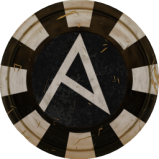
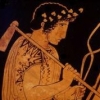


.thumb.png.ce58cea22940c255f5b0a735d5abee36.png)


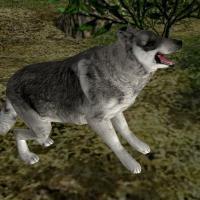

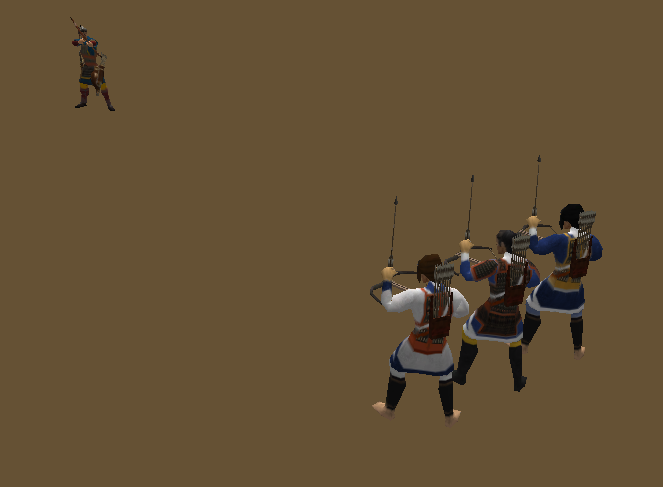


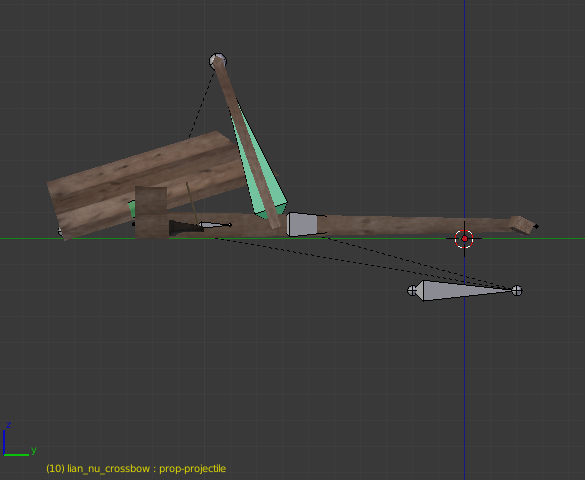

.thumb.jpg.62211684ddccbc9c7f8a5a3cca8d3bae.jpg)
